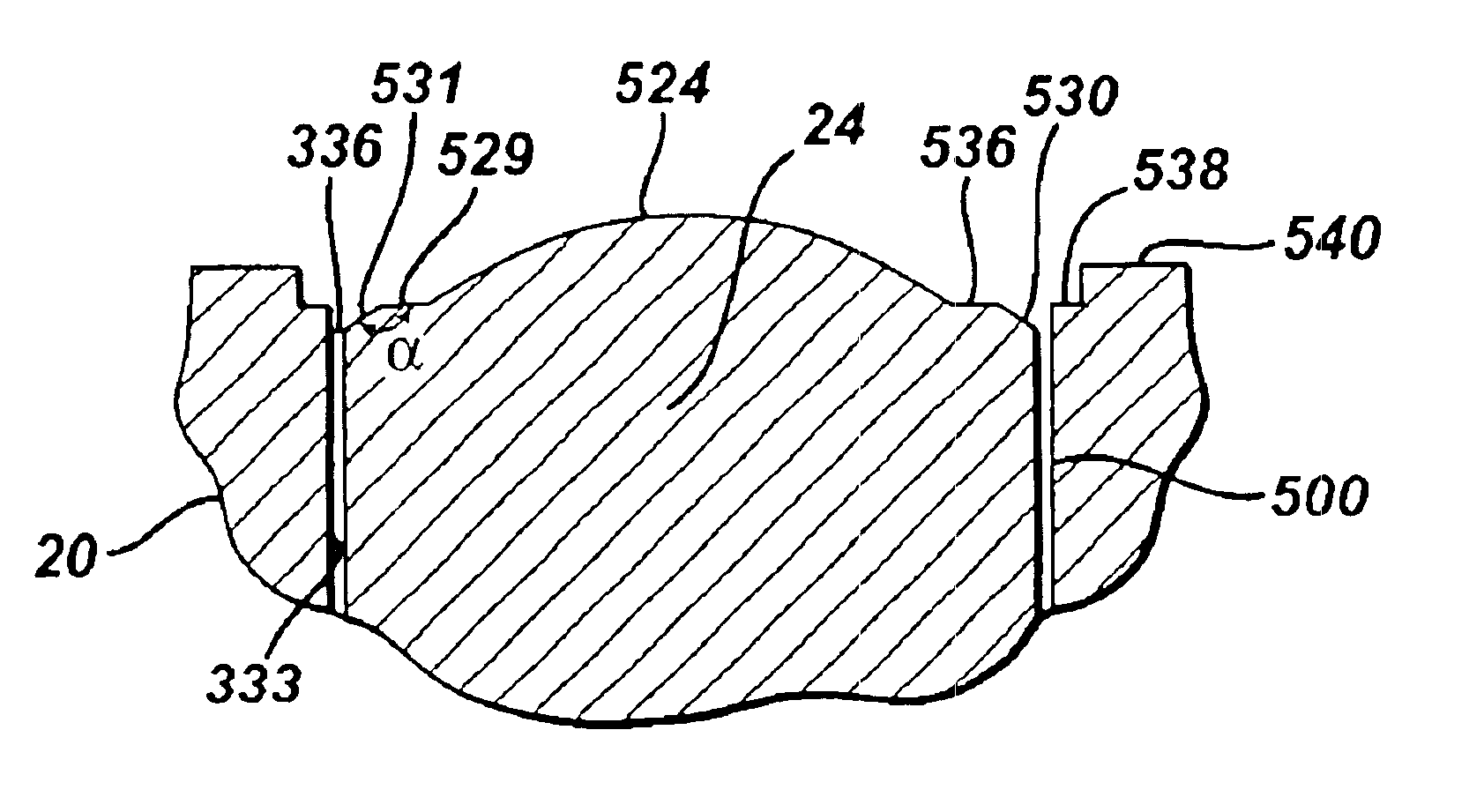Method and mold for making ophthalmic devices
a technology for ophthalmic devices and molds, applied in dough shaping, manufacturing tools, instruments, etc., can solve the problems of inconsistent and reliable release of molded ophthalmic devices from molds, and achieve the effect of improving the reliability of release and avoiding any down time of molding machines
- Summary
- Abstract
- Description
- Claims
- Application Information
AI Technical Summary
Benefits of technology
Problems solved by technology
Method used
Image
Examples
Embodiment Construction
The method and mold of this invention can be used to mold ophthalmic devices using any molding techniques; however, this invention is particularly well-suited for the formation of a molded ophthalmic device in a mold that involves shrinkage and / or air ejection of the molded device. Preferably the molding technique that is used involves the molding of a thermoplastic, preferably by injection molding. Preferably the thermoplastic material is heated prior to injection into the mold and is cooled for a period of time when in the mold, preferably for less than four seconds, prior to removing the molded part from the mold. In addition to injection molding, this invention can be used in other molding processes, such as coining, compression molding, and thermoforming under a vacuum, and the like.
The front curves and back curves of this invention are preferably made using improved molds preferably in injection molding machines. The improvements will be described herein; aspects of the mold o...
PUM
| Property | Measurement | Unit |
|---|---|---|
| time | aaaaa | aaaaa |
| thickness | aaaaa | aaaaa |
| thickness | aaaaa | aaaaa |
Abstract
Description
Claims
Application Information
 Login to View More
Login to View More - R&D
- Intellectual Property
- Life Sciences
- Materials
- Tech Scout
- Unparalleled Data Quality
- Higher Quality Content
- 60% Fewer Hallucinations
Browse by: Latest US Patents, China's latest patents, Technical Efficacy Thesaurus, Application Domain, Technology Topic, Popular Technical Reports.
© 2025 PatSnap. All rights reserved.Legal|Privacy policy|Modern Slavery Act Transparency Statement|Sitemap|About US| Contact US: help@patsnap.com



